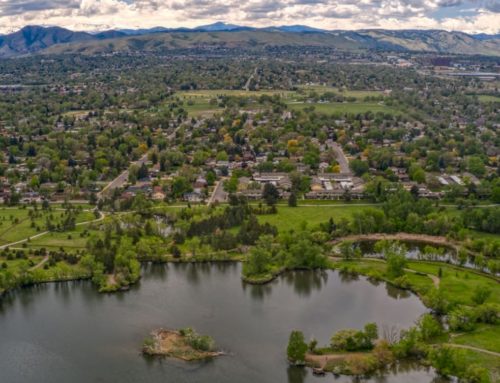Designing Your ArcGIS Enterprise
A GIS is, at its core, a system. That is, a GIS is not a singular entity but instead a network of interrelated parts. Commonly, a GIS is described as being a system comprised of hardware, software, data, methods, and people. These components interact and depend on each other for a GIS “to work.” A well-designed and operationally sound GIS invests in and adequately supports all of these components. If one or more of these system components have issues, then the entire system is compromised and/or leveraged suboptimally.

As organizations continue to see the value-proposition, analytical potential, and rich insights that GIS and GIS operations provide, enterprise GIS has rapidly become a major player in the GIS ecosystem. The preeminent software solution for enterprise GIS is ArcGIS Enterprise, formerly branded as ArcGIS for Server.
ArcGIS Enterprise is a set of applications that work together to provide enterprise (organization-wide) GIS functionalities. ArcGIS Enterprise works in tandem with Esri’s traditional desktop GIS software suite and Esri continues to converge the two products for seamless integration, extended support, and accessible usage. Geographic Technologies Group has assisted numerous organizations in the optimization of their environment. A few examples of these are as follows:
City of Lawrenceville, Georgia
With the help of Geographic Technologies Group, the City of Lawrenceville now has a modern, scalable, and intuitive enterprise GIS, enabling the City to more effectively leverage its spatial data, systems, and business processes. GTG is continuing to develop web GIS solutions for the City that will serve as primary platforms for City staff to interact with the new GIS.
The City of Lawrenceville has previously maintained a mosaic GIS; that is, a GIS that is comprised of isolated, non-unified and semi-autonomous components rather than leveraging a platform-approach to provide consistent, unified, and enterprise-level GIS services to the organization.

One of the main factors informing Geographic Technologies Group’s (GTG) design of the City’s new enterprise GIS was to ensure the continuity of GIS services and business processes. GTG designed the City’s GIS with not only web GIS applications in mind, but also with a future-oriented perspective that enables the organization to grow, evolve and adapt to changing business and organizational pressures.
The City’s GIS was designed and implemented using an ArcGIS Enterprise 10.7.1 base deployment and is supported by a Microsoft SQL Server database configured as an Esri enterprise geodatabase allowing for optimized storage, retrieval, and analysis of spatial information. The ArcGIS Enterprise Base Deployment includes instances of Portal for ArcGIS and associated hosting server, ArcGIS Data Store (relational), ArcGIS Server, and ArcGIS Web Adaptors. To most effectively meet the current and future needs of the City and to enable the City to effectively manage its GIS, respond to changing organizational requirements, and in an effort to modernize the City’s geospatial technology, GTG designed and implemented the City’s Enterprise GIS using Esri’s state of the art ArcGIS Enterprise platform.
City of Mississauga, Ontario
In the spring of 2019, the City of Mississauga, ON and Geographic Technologies Group (GTG) worked together to implement a modern, sustainable, and efficient Geographic Information System (GIS) to meet its current and future spatial needs. The City engaged with GTG to assist in the design and deployment of their development GIS and offer guidance and support relating to the City’s use of ArcGIS Online (AGOL).
 The foundation of the City of Mississauga’s new Enterprise GIS is the new server architecture with state of the art Esri software implementations. The server architecture is based on the recommendations laid out in the Geospatial Strategic Master Plan GTG completed for the City in 2018. The goal of the implementation project was to have a Proof of Concept Enterprise GIS framework in place to allow the City of Mississauga to develop, maintain, analyze, and publish GIS information. They also wanted to have the install/configuration documented so City staff can administer the system in full Staging and Production environments.
The foundation of the City of Mississauga’s new Enterprise GIS is the new server architecture with state of the art Esri software implementations. The server architecture is based on the recommendations laid out in the Geospatial Strategic Master Plan GTG completed for the City in 2018. The goal of the implementation project was to have a Proof of Concept Enterprise GIS framework in place to allow the City of Mississauga to develop, maintain, analyze, and publish GIS information. They also wanted to have the install/configuration documented so City staff can administer the system in full Staging and Production environments.
The scope of work for the project included two major efforts: the implementation of a developmental Esri ArcGIS Enterprise-based GIS on the City’s infrastructure; and the development of an ArcGIS Online governance plan. Both of these tasks were implemented and documented to support the City in its continued operations and ultimately its planned deployment of a production enterprise GIS. The project requirements were:
- Design, implement, configure and deploy a developmental enterprise GIS using Esri’s ArcGIS Enterprise version 10.6.1;
- Use the City’s existing Active Directory (AD) security model;
- The GIS will be supported by Microsoft SQL Server data-tier;
- The GIS’ data tier will use replication to isolate the maintenance and publication database environments;
- Provide knowledge transfer documentation detailing the GIS, how it was implemented and including any relevant information to the GIS and its operation;
- ArcGIS Online Governance Plan.
In the Winter of 2020, GTG is working with the City of Mississauga to implement a highly available and redundant Production GIS. The project is scheduled for completion in February of 2020.
City of Morgan Hill, California
The Geographic Information System (GIS) industry has undergone a rapid, expansive and disruptive transformation in the last decade. The scope of GIS, its technologic capabilities and its ability to integrate with other IT systems and applications have allowed for the true realization of an “enterprise GIS.” In an effort to completely leverage the capabilities of a modern, enterprise GIS, Geographic Technologies Group (GTG) conducted a GIS Architecture Assessment for the City of Morgan Hill, California.
A GIS is ultimately a part of an organization’s IT infrastructure and must be designed from the hardware tier up. An organization cannot effectively leverage a GIS if the hardware, software, network and IT resources fail to meet the needs of the organization. An effective GIS is designed at many levels, but the underlying infrastructure will ultimately control whether the system can adequately support the needs of its users.

In 2019, GTG reviewed and assessed the performance of the existing Morgan Hill GIS infrastructure, and gathered information on the current workflows, users and integrations of the system and the resources available to support the City’s GIS. Using Esri’s Capacity Planning Tool’s (CPT) GTG assessed City needs for system design specifications to ensure a performant system was proposed and implemented. This assessment produced a depiction of how the City’s GIS has been implemented, how it is currently being leveraged, and what opportunities exist for strengthening and extending the organization’s GIS.
GTG complimented the technical assessment by facilitating interviews, documentation reviews, and taking steps to understand the organization’s goals and vision. This information was synthesized to create a recommended system architecture design for the City of Morgan Hill. The recommended system architecture represented a GIS that will meet both the current and forecasted needs of the City and provide greater performance, functionality, and extensibility.
GTG implemented the Morgan Hill production GIS in the Fall of 2019. The GIS adheres to Esri, industry, and GTG best practices. The system follows the multi-tiered principle of system architecture (database, application, & web tiers) and isolates these components to achieve workload separation. The GIS leverages Esri’s 10.6.1 ArcGIS Enterprise platform and is supported by an Enterprise Geodatabase configured on Microsoft’s SQL Server Relational Database Management System (RDMS). Taken together, the City of Morgan Hill has a performant, scalable and sustainable GIS to support their current and future GIS activities. Following the IT best practices of promotional environments, GTG also proposed and implemented development and staging GIS environments for the City of Morgan Hill.
City of Roswell, Georgia
In January of 2020, the City of Roswell, Georgia, and Geographic Technologies Group (GTG) worked together to upgrade the City’s existing GIS from ArcGIS 10.3.1 to ArcGIS 10.6.1. This upgrade is intended to support a modern, scalable, and value-driven Geographic Information System (GIS) to support the organization and its partners.
 Roswell’s GIS leverages Esri’s ArcGIS Server platform to deliver distributed, organization-wide GIS services to the government, its partners, and its residents. The City’s GIS was upgraded to ArcGIS 10.6.1 of the ArcGIS Server, Enterprise Geodatabase, and ArcGIS Desktop suite. The Roswell GIS adheres to Esri’s “Web GIS” design pattern, which follows industry best practices for workload separation, horizontal scalability, and service-oriented architecture (SOA). The GIS enables the organization to grow on-demand.
Roswell’s GIS leverages Esri’s ArcGIS Server platform to deliver distributed, organization-wide GIS services to the government, its partners, and its residents. The City’s GIS was upgraded to ArcGIS 10.6.1 of the ArcGIS Server, Enterprise Geodatabase, and ArcGIS Desktop suite. The Roswell GIS adheres to Esri’s “Web GIS” design pattern, which follows industry best practices for workload separation, horizontal scalability, and service-oriented architecture (SOA). The GIS enables the organization to grow on-demand.
The GIS is supported by two Microsoft SQL Server databases that have been upgraded to ArcGIS 10.6.1 allowing for optimized storage, retrieval, and analyses of spatial information. The geodatabases support both local (desktop) and distributed/service-mediated (enterprise) GIS workflows within the Esri ecosystem. Additionally, the data and its related web services can easily be integrated into other business applications and processes.
The current GIS was upgraded to accommodate future GIS efforts, an increase in both the internal and external GIS customer base, and to develop along with the industry’s technologies. The GIS was upgraded successfully on-premise and will be managed by Roswell’s GIS and IT staff.






